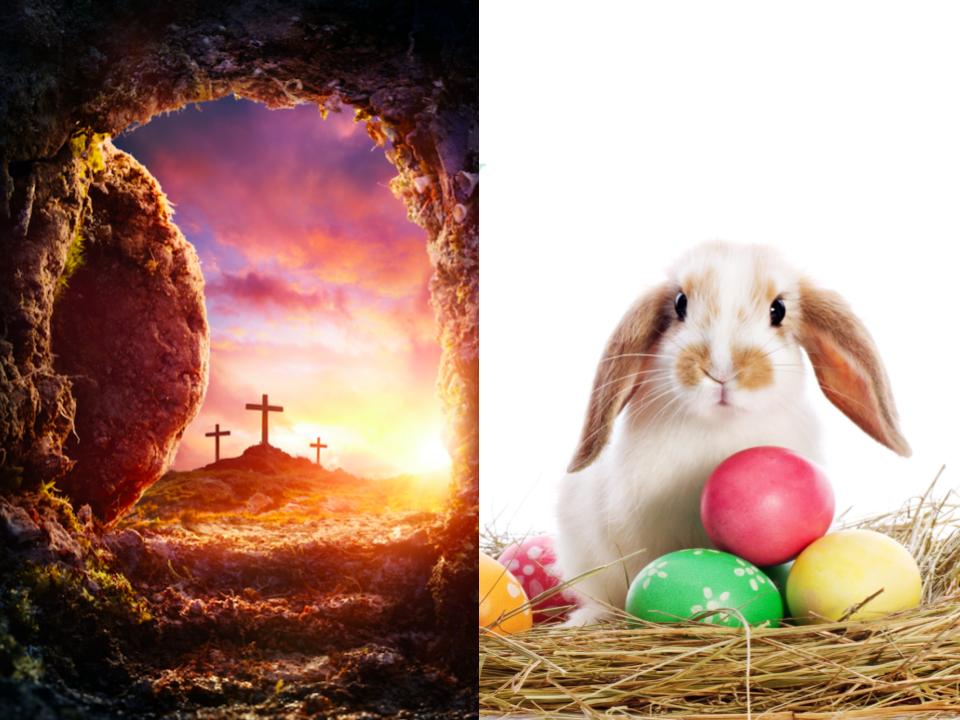Easter traditions
Easter is a holiday celebrating the resurrection of Jesus from the dead on the third day of his burial after his crucifixion. Easter is also linked to the Jewish Passover. Jews celebrate Passover as a commemoration of their liberation by God from slavery in ancient Egypt and their freedom as a nation under the leadership of Moses.
Throughout the English-speaking world, many Easter traditions are similar. Many families observe the religious aspects of Easter by attending Sunday Mass or services in the morning and then participating in a feast or party in the afternoon. Parents tell their children that treats such as eggs, chocolate rabbits, or plastic eggs filled with candy have been hidden all over the house or yard by the mysterious Easter Bunny. But did you ever wonder what Jesus has to do with bunnies and eggs? Not very many people know why they are celebrating Easter the way they do.
Origin of the word ‘Easter’
The word ‘Easter’ comes from the fertility goddess Eostre (Ostara in continental Europe). Eostre was celebrated by European pre-Christian religions on the first day of spring when the days start getting longer and nature begins waking up. Since the Christian celebration of Easter roughly coincided with the celebration of Eostre – the customs began to mix.
Bunnies and Easter
Rabbits mature sexually at an early age and mate during springtime. They can conceive a second litter while still pregnant with the first and give birth to several litters a year (hence the saying, “to breed like rabbits.”) This explains how rabbits and hares became fertility symbols and how their springtime mating ritual entered Easter folklore.
A bunny laying eggs
An old Teutonic myth tells us that one winter day, Goddess Eostre was passing through a snow-covered forest and found a bird dying from hunger and cold. Goddess Eostre transformed the bird into a rabbit, giving him a warm fur and a better chance to find food; this is how the animal survived the winter. When spring came it started laying eggs. It then decorated every egg, leaving it to Eostre as a sign of gratitude. Hence the Easter Bunny leaving eggs hidden in the garden. The custom of the Easter egg hunt was brought to the U.S. by German immigrants in the 18th century.
Eggs and Easter
The Christian custom of Easter eggs started among the early Christians of Mesopotamia. Eggs were associated with death and rebirth. People stained eggs with red coloring in memory of the blood of Christ, shed at His crucifixion. Some Christians symbolically link the cracking open of Easter eggs with the empty tomb of Jesus, others see it as a symbol of resurrection: while being dormant it contains a new life sealed within.
The big question
The question to ask ourselves as parents: What Easter tradition do we want to pass on to our children? Do we want them to believe in the magic of the Easter bunny? Or do we prefer the historical or religious approach? Or can we combine both?
I am not saying there is a right or a wrong answer, I am just saying, keep in mind that what we feed our children’s minds and bodies influences their thoughts, behavior, happiness, and health.
And today, more than ever, eating and feeding healthy and making sure our immune system is strong is more crucial than ever!
Stay healthy and happy Easter everyone!
Source: ONCE YOU KNOW – A Guide to Preserving Your Child’s Health, by Agnes Deglon, available on Amazon





